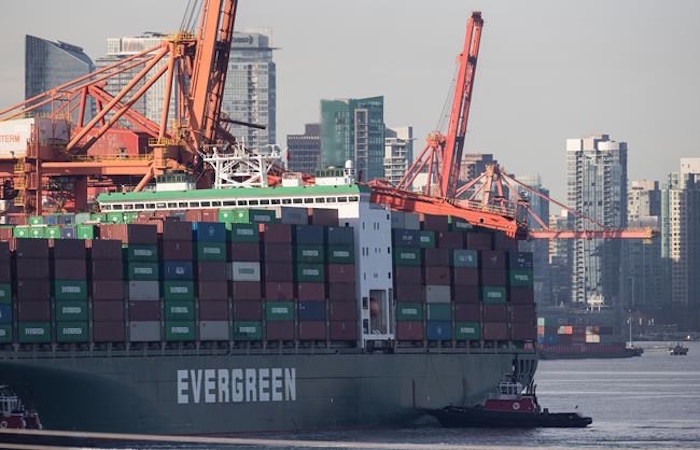There appears to have been some shipping delays but no major cargo diversions as a result of the collapse of a gantry crane struck by Evergreen’s 7,000-TEU Ever Summit vessel berthing last Monday at one of the four container terminals at the Port of Vancouver. With the aid of two floating cranes rapidly dispatched to the scene, recovery operations will reportedly allow for the resumption of normal activity by Sunday, according to Global Container Terminals (GCT), operator of the Vanterm facility. No operations outside the Vanterm terminal have been impacted at Canada’s largest port which handled a record 3.4 million TEUs in 2018.
“Aided by favourable weather, good headway is being made and vessel operations are expected to fully resume by Sunday. Since the incident on 28 Jan 2019, only the vessel operations have ceased, while the truck gate and rail operations remained unaffected,” said GCT spokesperson Louanne Wang.Recapitulating the main developments, Wang said: “During berthing at approximately 04:00hours PST on 28 Jan 2019, a vessel came into contact with a GCT Vanterm ZPMC ship-to-shore crane in the Port of Vancouver, resulting in damage. The crane boom is resting on top of a container stack at the aft end.
“Immediately after the event, an exclusion zone was established to first and foremost ensure the safety of everyone working at or interacting with the terminal. This has been maintained throughout recovery. There were no injuries as a result of the incident, and Global Container Terminals is supporting Transport Canada and the Transportation Safety Board in their investigations.

By Tuesday, a 900 ton floating crane – The Beast – and second 600 ton floating crane – the Artic Tuk – were brought in to support recovery operations, while the vessel is secured to the berthface with lines. Supported by external contractors, GCT Canada’s engineering and maintenance teams are continuing work on a comprehensive operations recovery.
“The response and salvage plan by GCT has been remarkable to date,” Robert Lewis-Manning, President of the Vancouver-based Chamber of Shipping, told the American Journal of Transportation. “It is providing a degree of confidence for ocean carriers that the incident will be resolved and/or mitigated more quickly than would have been anticipated a few days ago.”
“While some cargo may be diverted to Prince Rupert and the United States, it will likely be limited,” Lewis-Manning said, adding: “I expect ocean carriers may adjust their schedules to better reflect the availability of the berth. There continues to be an impressive high level of coordination between the supply chain partners.”
An executive with freight forwarder Rodair International and Rodair Customs Brokers indicated that there has been “no significant disruption” of freight forwarding operations in Vancouver. “We had a couple of Exchanger import containers delayed but other than that no impact to us.”
As well as operating Deltaport container terminal at Roberts Bank (biggest in Canada) in the Port of Vancouver, GCT operates box terminals on Staten Island, NY and at Bayonne, NJ.

